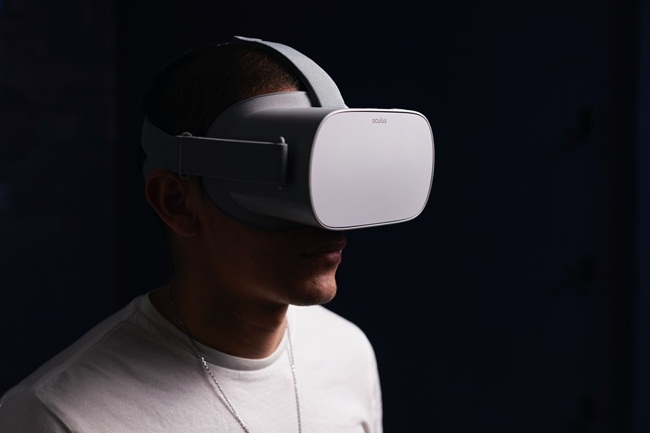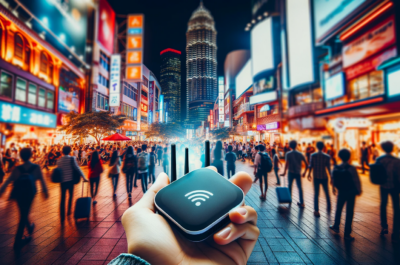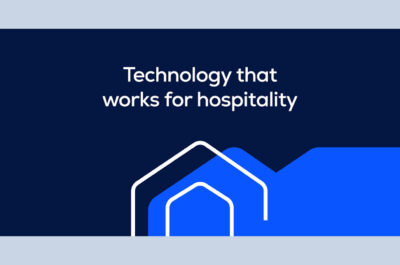As both technological advancements continue to evolve and hit the market, the question is, how powerful or indeed damaging could their crossover be? The power of augmented reality infused with the introduction of 5G could revolutionise consumer marketing, gaming systems and enhance the capabilities of each digital device we own.
Enter the new world of 5G technology. From ultra-fast download speeds to increased network availability, this is the technological revolution that is set to change the digital world as we know it. Using the cloud, AI will become smarter and provide an optimised online experience that customers will be flocking for.
But how will this affect Augmented Reality? AR is constantly evolving to improve user experience. Using AR-powered smart glasses, consumers are now able to enhance their physical surroundings and create virtual overlays for both marketing, gaming and business-enhancing purposes.
As both technological advancements continue to evolve and hit the market, the question is, how powerful or indeed damaging could their crossover be? The power of augmented reality infused with the introduction of 5G could revolutionise consumer marketing, gaming systems and enhance the capabilities of each digital device we own. This said, could augmented reality be living on the edge as we embrace the new powers of 5G? Developers of AR smart glasses are reluctant to embrace the 5G solution, in fear that the crossover could do more harm than good to an ever-changing industry.
What is 5G?
As the new and improved version of 4G, the rise of 5G technology is on the horizon. With the Global 5th generation mobile network adoption set to triple in 2021, it’s no surprise that tech gurus can’t stop talking about its phenomenal capabilities.

(Source: Statista)
Designed to connect the globe, 5G will take power in virtually connecting everything from machines to objects and devices. With a high real-time performance rate, 5G is able to break through the barriers current technology is facing. Forget loading bars and frozen web pages, 5G is here to connect you no matter where you are.
In a worldwide rollout alongside other new technologies such as Wi-Fi 6 and Millimeter-Wave, 5G ensures a wireless performance that will struggle to be matched in terms of efficiency and reliability.
According to AICards, 5G users will see a magnificent comparison to their 4G counterparts, with higher multi-Gbps data speeds, increased network capability and the ability to handle larger amounts of data than any other network design.
This performance leap will change the way both smartphones and their apps are designed, as the ability for high-real time performances will rewrite the barriers associated with app production. One of the apps in question is XR (Extended Reality). This is where AR and VR come into the picture. As developers are given more free reign to create more engaging virtual realities, powered by the speed of 5G, we could see AR and VR markets soar alongside new technological developments, transforming the landscape of digital marketing as we know it.
How will this affect the AR industry?
5G is set to transform the AR consumer market. As an industry with engagement rates already exceeding the 40% that experts predicted, this next generation of networks is only set to increase that number.
From marketing to game platform growth, brands are continuing to jump at the chance to include augmented reality in their marketing strategies across a number of industries, ranging from real estate to fashion. Since the introduction of Web AR, first designed in the early 1990s, company leaders have flocked towards a more digital consumer landscape for a future digital native generation. This said, 4G networks have often posed as barriers for AR success due to slower download speeds impacting real-time orientated campaigns.
5G could be set to change this pattern with their ultra-fast downloading speeds for AR efficiency that marketers can trust in real-time. In the past, any AR or VR experience with over 20Mb of data has put too much pressure on a 4G network. As 5G continues to diminish the restraints on big data downloads, this new technological transition could provide endless opportunities for new AR marketing.
Imagine changing real-time as consumers once knew it with a partnership of AR-powered eyewear and the impacts of 5G. Together, this technology opens doors for real-time editing for consumers while they shop and added intelligence to aid sales representatives.
An example by Qualcomm suggested that virtual billboards could become the new normal, presenting the idea of a woman viewing a styled look on a mannequin that with the help of AR infused eyewear and the powerful capabilities of a 5G network could turn into the woman herself, allowing her to picture the clothing on her own body in real-time.
The sales techniques are endless and this is just the start of a digitalised future across the high street, but the question is, is everyone ready for this change?
Why 5G might not be the solution for AR developers
For AR eyewear developers, 5G may not be the solution to the problem. Yes, marketing opportunities are infinite when paired with this new efficient network, but ultimately, downloading speeds may not be the issue for this industry.
The problem arising within both the virtual reality and augmented reality community is the lack of adaptability surrounding eyewear styles and production. For high tech gaming and real-time business technology, headsets and AR eyewear are a superficial factor that isn’t currently contributing to their success, however, on the high street, large, bulky frames may not work for the rest of the population.
For 5G infused eyewear to take off, smaller and understated styles need to head into play that assist daily needs such as UV and blue light protection as well as AR. Some developers have suggested that attractive lenses with a simple shape that can enhance normal sight are the next step towards worldwide success. For a newly digital population to get on board, we need to see a future of interactive eyewear that looks no different to our common, top brands spectacle.
As the future of 5G sits on the horizon, it’s back to the drawing board for many AR developers who are aiming to attract larger demographics to their tech. There is no doubt, however, that when AR eyewear and 5G do eventually merge, the digital possibilities will be endless for the entire global market.
Photo by Justin Doherty from Pexels

































































































































































